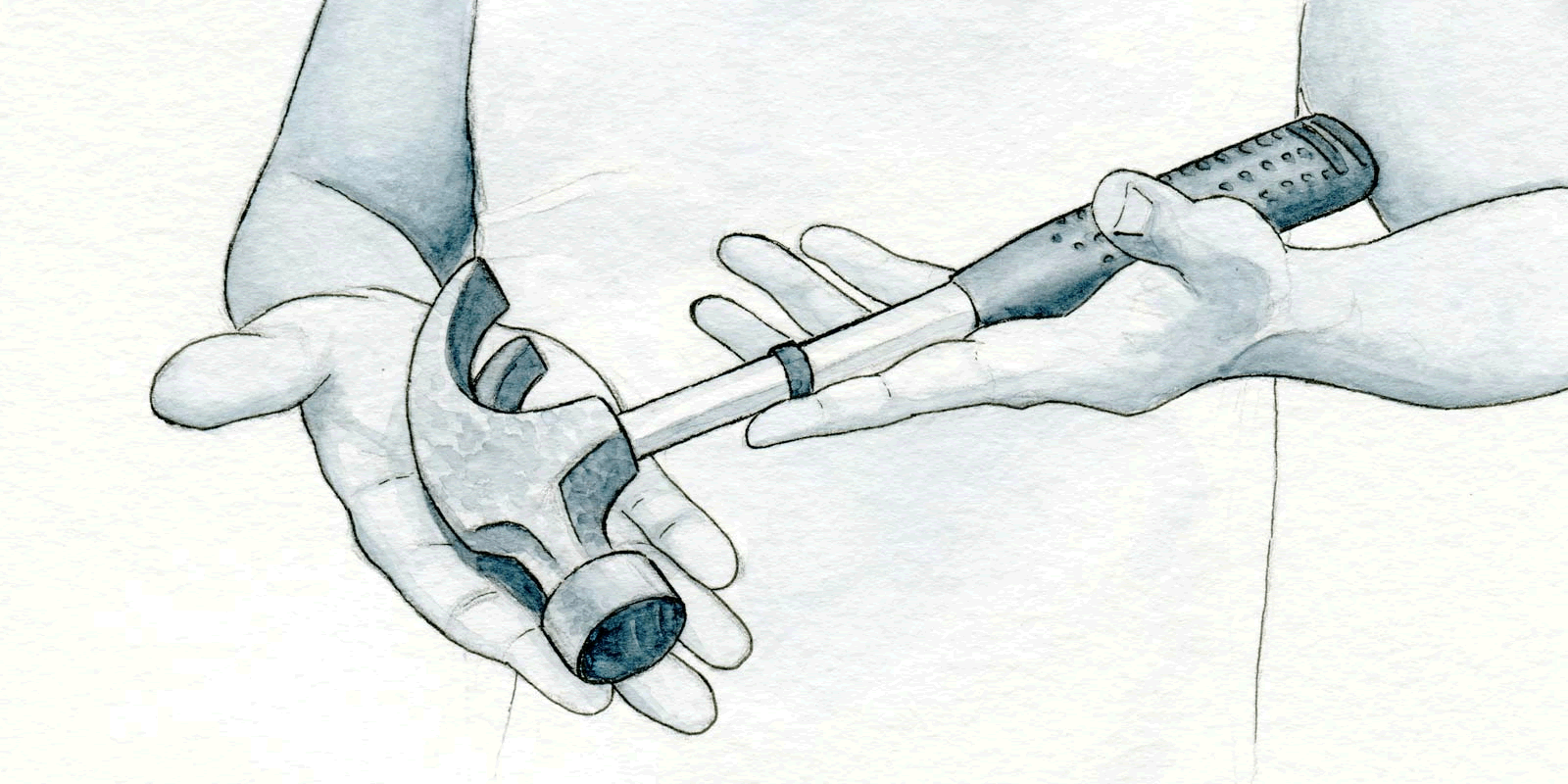If you do it yourself, how far should you go? Sometimes the answer is simple. If there are no other means of getting it done, go as far as you have to go. If it’s a learning opportunity, go as far as you’d like to go. But what if you have options? If you’re feeling like you should do it yourself, especially if you have some skill or knowledge about it already, weigh the DIY option carefully.
Everything looks like a nail
Doing it yourself is an excellent way to understand a thing…at least from one point of view. Once you learn a skill or a method you’ll understandably want to put it to use again when other opportunities arise. However, it may not be the best way to achieve what you ultimately want. This is the law of the instrument: “if all you have is a hammer, everything looks like a nail.”
As a designer, you have to not only be willing to throw your own work away, you should actively seek the right times to do so. Find ways to experiment so you can quickly try – and more importantly, throw away – these experiments until you reach the results you want. It can be awfully difficult to do this if you’ve invested in a particular method that is not easy to replicate…especially if it was the result of teaching yourself something new. That initial DIY glow may not be so bright when faced with starting over from scratch.
Prototypes in particular can fall into this trap. They’re helpful to get a sense of a system early on, and can be an effective way to fine-tune interaction details such as animations. When put together, though, they can take on a life of their own and may make that particular design a bit too precious. They can lead you to focus on small details too early, and potentially overlook more radical (but more difficult to prototype) approaches. The approach you know may be reliable but not optimal.
The roadblocks of expectation
For personal projects it can be easy to take it DIY too far and end up utterly frozen. A good idea can easily end up as a shadow project, existing only in your mind. You may not need more willpower or more research to get it done…you may just need to rethink your approach to DIY.
I’ve found that the biggest roadblock to making progress on my personal projects was a stubborn feeling that I should do every part of it simply because I could. That DIY expectation was also colored by a few popular archetypes: being a hybrid designer/developer and/or a woman in tech. I’d felt not a pull but an obligation towards one or both. It was just enough to keep me from making progress.
The most effective thing I found to break past this was to take a look at the same projects from a business perspective. Once I did, it became clear that these expectations were counterproductive. What happens when you don’t have the resources you need to complete a project in the timeframe or manner you want? You could adjust the scale of the project. You could work with partners. You could buy technologies you can adapt to your needs instead of making them from scratch. You could invest in the time needed to build out what matters. You are simply not obligated to approach a project in a certain way…unless you’re being paid to use a certain product or create a very specific type of deliverable, I suppose.
Deciding what mattered and finding the right ways to experiment got me past these roadblocks. So ask yourself: what parts truly matter to you for this project in particular? Get specific about where you want to spend your time. Get your hands dirty when you want, and be content to take an easier path for the rest. You can always find an opportunity to DIY later on when it’s truly what you want to do.


Leave a Reply